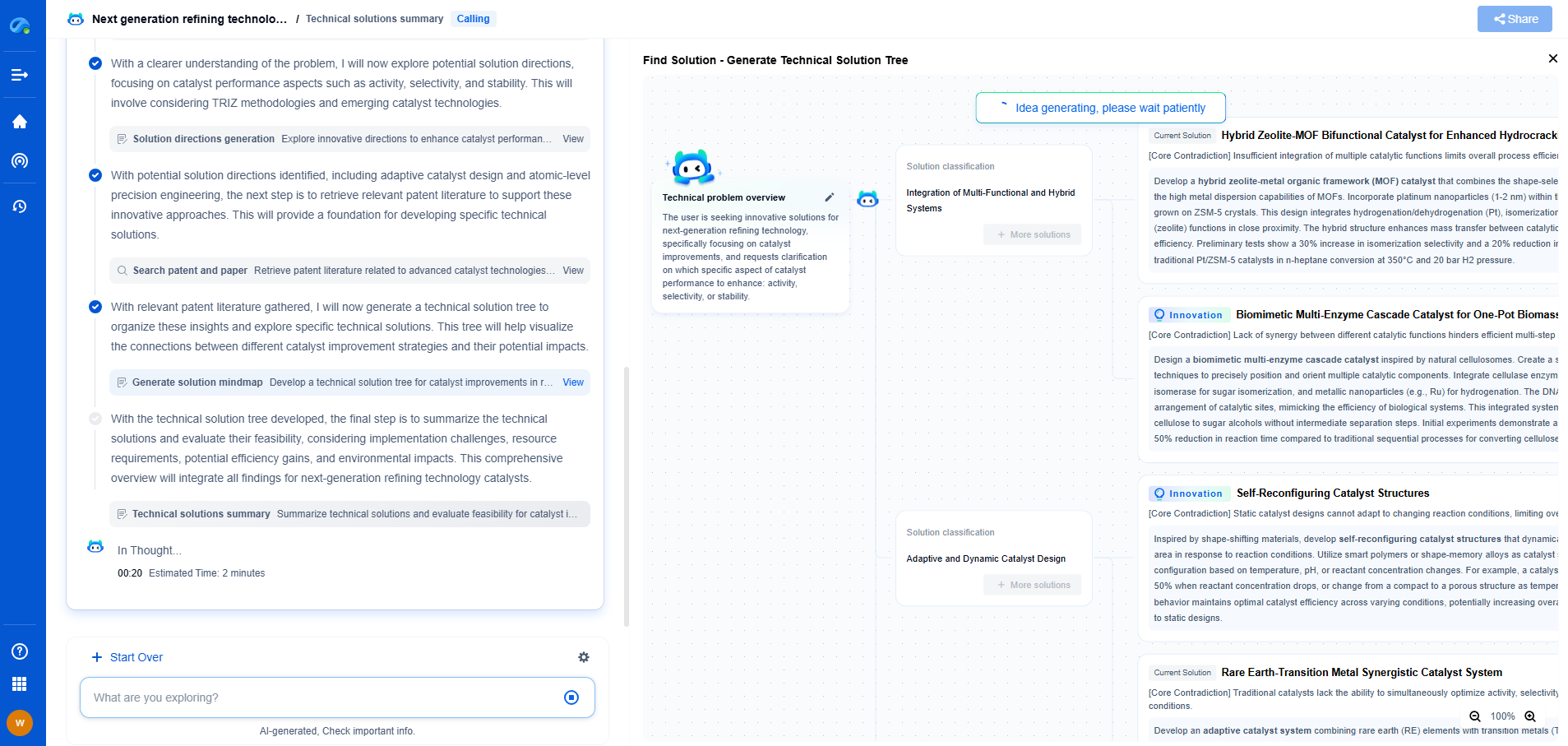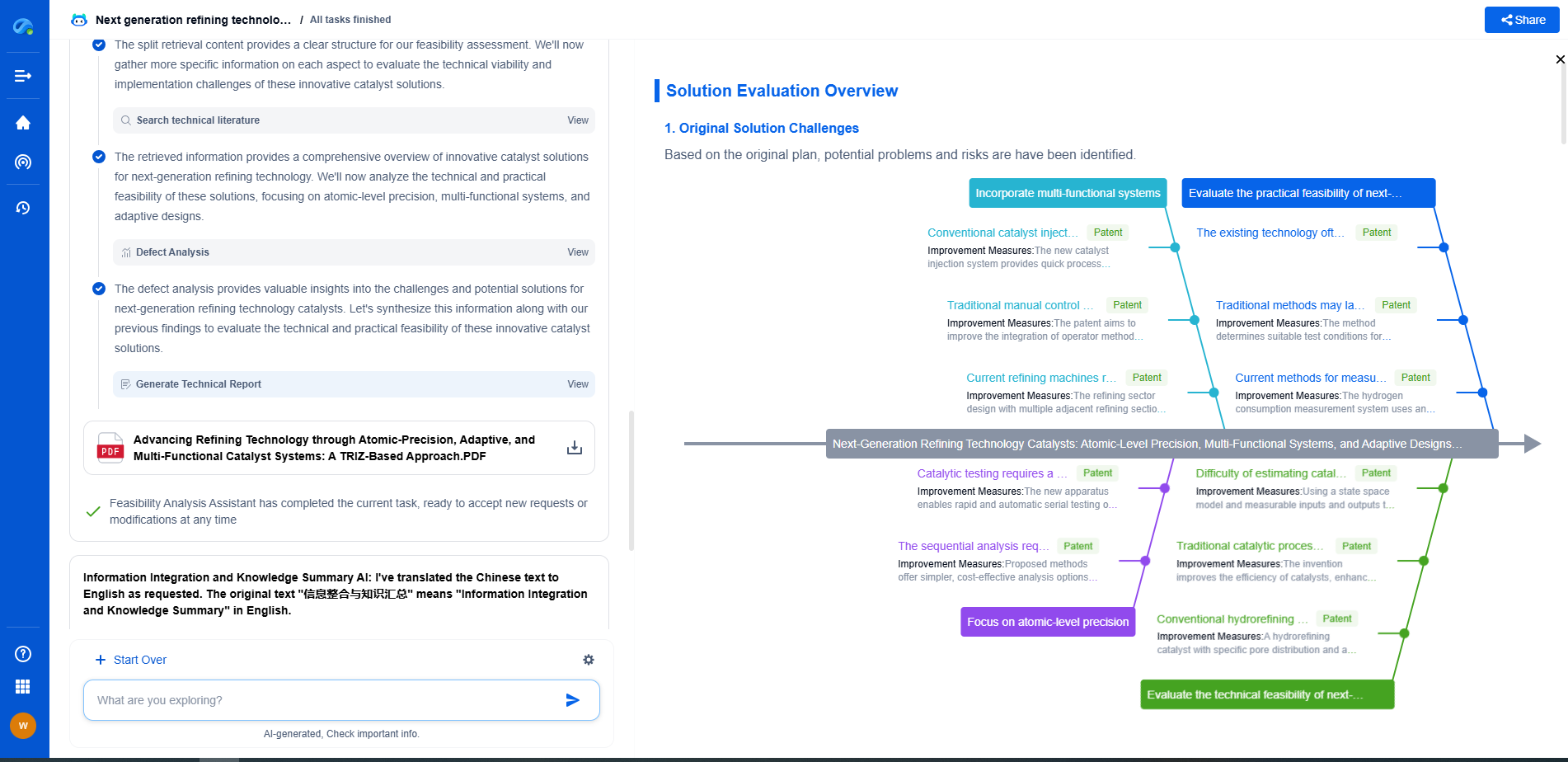What is Permeability? How It Affects Magnetic Core Performance (μ vs. μᵣ)
JUN 26, 2025 |
When delving into the world of magnetic cores, permeability is a crucial concept that dictates how well a material can support the formation of a magnetic field within it. In the simplest terms, permeability is a measure of the ability of a material to conduct magnetic lines of force. Understanding this property is essential for optimizing the performance of magnetic cores used in various electrical and electronic applications.
Defining Permeability
Permeability is denoted by the symbol μ and is expressed in henries per meter (H/m). It is a fundamental parameter in the field of electromagnetism and is used to characterize how well a material can become magnetized when exposed to an external magnetic field. The higher the permeability, the more easily the material can be magnetized.
Permeability is an intrinsic property that depends on the material's composition and structure. For instance, materials like iron and ferrites have high permeability, making them ideal for use in magnetic cores.
Absolute Permeability (μ) vs. Relative Permeability (μᵣ)
To fully grasp the concept of permeability, it is vital to differentiate between absolute permeability (μ) and relative permeability (μᵣ). Absolute permeability is the measure of a material's ability to conduct magnetic flux and is a specific property of each material. It is measured in comparison to the permeability of free space, known as the permeability of vacuum (μ₀), which is approximately 4π x 10⁻⁷ H/m.
Relative permeability, on the other hand, is a dimensionless ratio that compares the permeability of a material to the permeability of vacuum. It is given by the formula:
μᵣ = μ / μ₀
This ratio allows engineers and scientists to easily compare the magnetic properties of different materials. A relative permeability greater than one indicates that the material is more permeable than a vacuum, while a value less than one suggests the opposite.
How Permeability Affects Magnetic Core Performance
Magnetic cores are critical components in devices like transformers, inductors, and electromagnets, where they play a significant role in enhancing magnetic field interaction. The permeability of the core material directly influences the efficiency and performance of these devices.
1. Enhanced Magnetic Field Strength
A higher permeability allows for a stronger magnetic field to be established within the core material for a given magnetizing force. This means that devices with high-permeability cores can achieve greater magnetic field strength, improving their performance in applications requiring strong magnetic coupling.
2. Reduced Core Losses
Materials with high permeability typically exhibit lower core losses, which include hysteresis and eddy current losses. Hysteresis loss occurs due to the lag between changes in magnetization, while eddy current loss is caused by the induced currents in the core material. By selecting a material with optimal permeability, these losses can be minimized, enhancing the overall efficiency of the magnetic core.
3. Improved Inductance
In inductive components, the inductance value is directly proportional to the permeability of the core material. A higher permeability results in a higher inductance, which benefits applications such as filtering, tuning, and energy storage. This capability allows designers to create more compact and efficient components by utilizing materials with suitable permeability.
Selecting the Right Material
Choosing the appropriate material for a magnetic core is not only a matter of selecting the one with the highest permeability. Other factors, such as frequency of operation, temperature stability, and mechanical properties, must also be considered to ensure optimal performance.
1. Frequency Considerations
At higher frequencies, the permeability of certain materials may decrease due to increased eddy current losses. Therefore, materials like ferrites, which maintain stable permeability over a wide frequency range, are often preferred for high-frequency applications.
2. Temperature Effects
Permeability can also be affected by temperature changes. Some materials exhibit significant changes in permeability with temperature variations, which can impact the performance of the magnetic core. Selecting materials with minimal temperature sensitivity is crucial in applications where temperature fluctuations are expected.
3. Mechanical Properties
In addition to magnetic properties, the mechanical strength and durability of the core material are essential, especially in applications subjected to mechanical stress or vibration. A balanced selection of materials with both desirable magnetic and mechanical properties ensures long-term reliability.
Conclusion
Understanding permeability and its impact on magnetic core performance is essential for designing efficient and effective electromagnetic devices. By carefully considering both absolute and relative permeability, engineers can optimize the selection of core materials, leading to improved device performance and energy efficiency. As technology advances, the exploration of new materials with tailored permeability continues to push the boundaries of what magnetic cores can achieve in modern applications.
Empower Electromagnetic Innovation with Patsnap Eureka
From high-frequency antenna arrays and electromagnetic shielding to plasma propulsion and wave-based energy transfer, the electromagnetic domain sits at the core of next-generation technologies. Yet navigating its vast landscape of patents, research papers, and evolving technical standards can be time-consuming and complex.
Patsnap Eureka, our intelligent AI assistant built for R&D professionals in high-tech sectors, empowers you with real-time expert-level analysis, technology roadmap exploration, and strategic mapping of core patents—all within a seamless, user-friendly interface.
👉 Experience Patsnap Eureka today and transform how your team navigates the complexity of electromagnetic innovation.
- R&D
- Intellectual Property
- Life Sciences
- Materials
- Tech Scout
- Unparalleled Data Quality
- Higher Quality Content
- 60% Fewer Hallucinations
Browse by: Latest US Patents, China's latest patents, Technical Efficacy Thesaurus, Application Domain, Technology Topic, Popular Technical Reports.
© 2025 PatSnap. All rights reserved.Legal|Privacy policy|Modern Slavery Act Transparency Statement|Sitemap|About US| Contact US: help@patsnap.com

